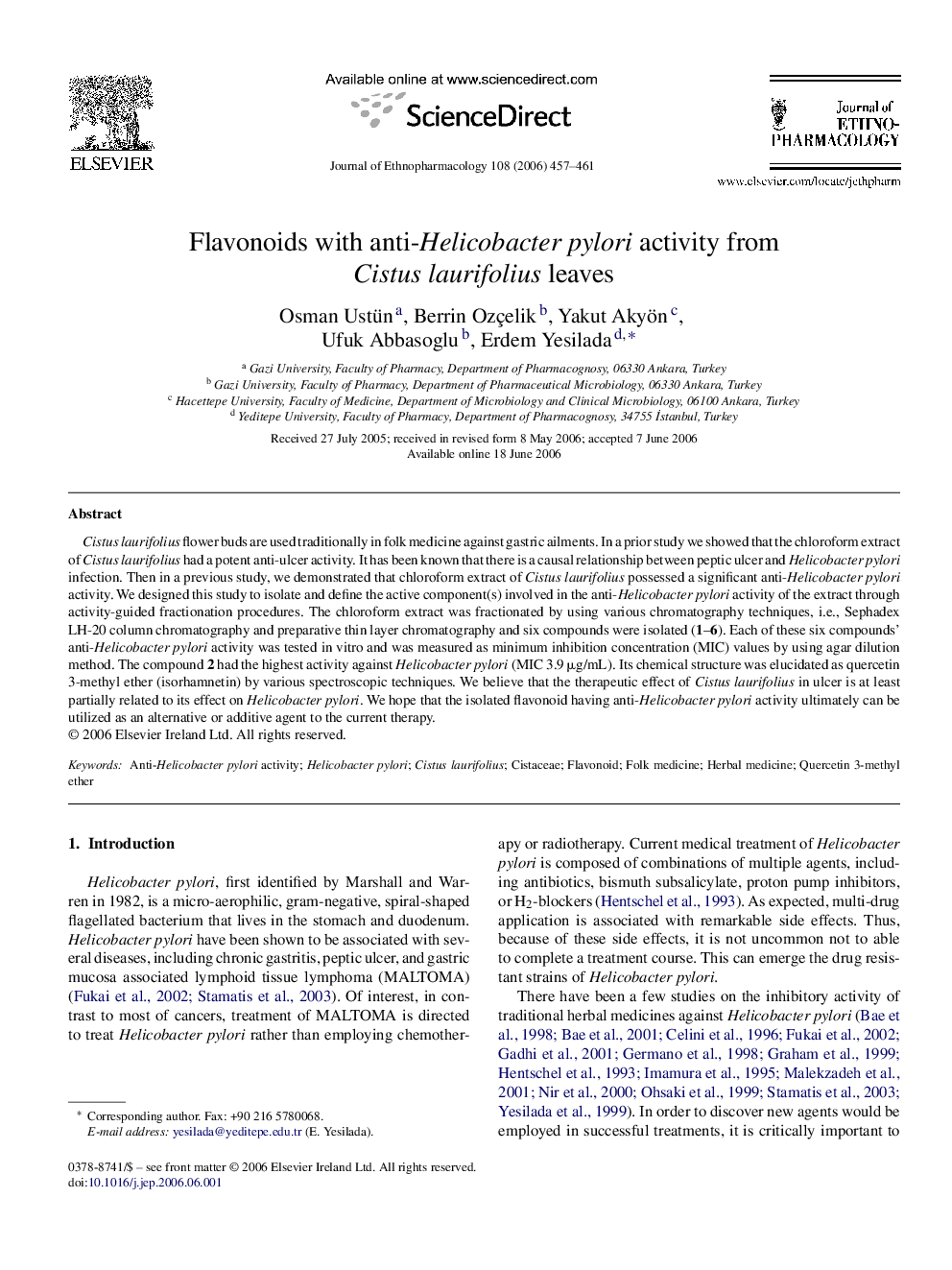| Article ID | Journal | Published Year | Pages | File Type |
|---|---|---|---|---|
| 2547396 | Journal of Ethnopharmacology | 2006 | 5 Pages |
Cistus laurifolius flower buds are used traditionally in folk medicine against gastric ailments. In a prior study we showed that the chloroform extract of Cistus laurifolius had a potent anti-ulcer activity. It has been known that there is a causal relationship between peptic ulcer and Helicobacter pylori infection. Then in a previous study, we demonstrated that chloroform extract of Cistus laurifolius possessed a significant anti-Helicobacter pylori activity. We designed this study to isolate and define the active component(s) involved in the anti-Helicobacter pylori activity of the extract through activity-guided fractionation procedures. The chloroform extract was fractionated by using various chromatography techniques, i.e., Sephadex LH-20 column chromatography and preparative thin layer chromatography and six compounds were isolated (1–6). Each of these six compounds’ anti-Helicobacter pylori activity was tested in vitro and was measured as minimum inhibition concentration (MIC) values by using agar dilution method. The compound 2 had the highest activity against Helicobacter pylori (MIC 3.9 μg/mL). Its chemical structure was elucidated as quercetin 3-methyl ether (isorhamnetin) by various spectroscopic techniques. We believe that the therapeutic effect of Cistus laurifolius in ulcer is at least partially related to its effect on Helicobacter pylori. We hope that the isolated flavonoid having anti-Helicobacter pylori activity ultimately can be utilized as an alternative or additive agent to the current therapy.
